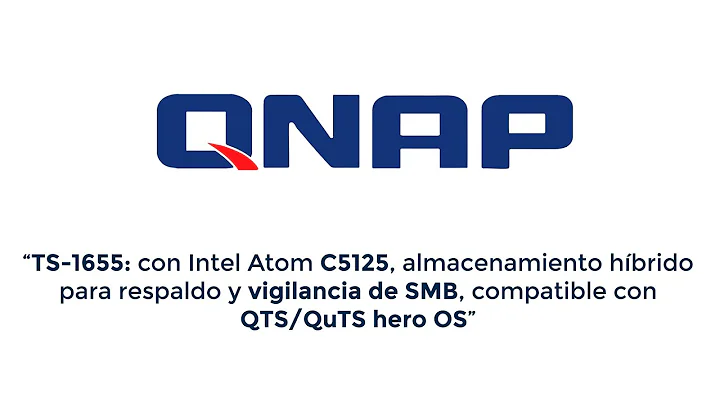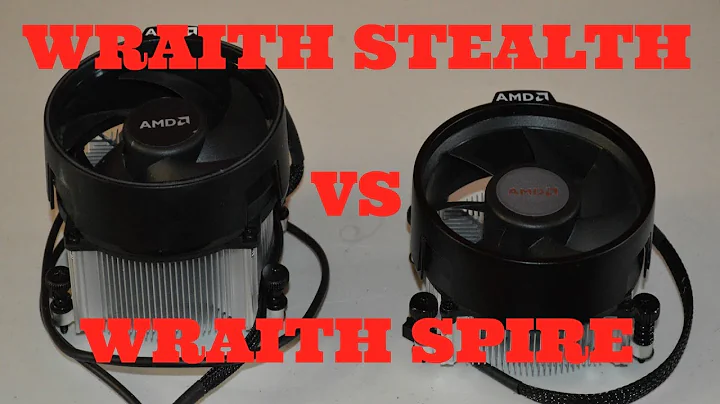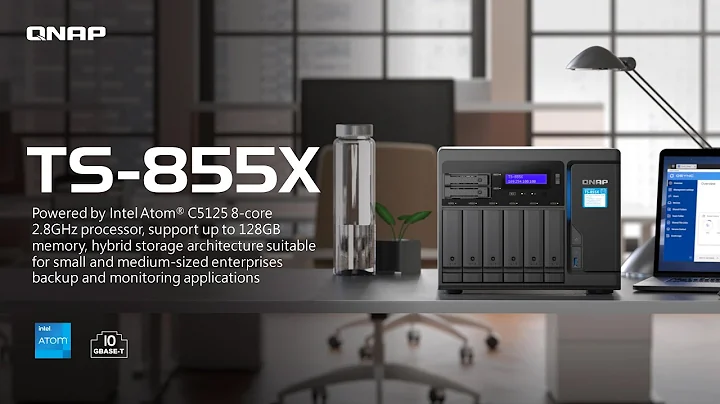Intel's Comeback and Challenges in the Silicon Industry
Table of Contents:
- Introduction
- Intel's Personnel Changes
- NVIDIA and ARM Acquisition Challenges
- Silicon Industry Challenges
- Intel's Comeback with Pat Gelsinger
- New Hires at Intel
- ARM Co-founder's Opposition to NVIDIA Deal
- Packaging Shortages in the Industry
- ARCTIC's MX-5 Thermal Interface
- NVIDIA's Trackball Controller Patent
- Samsung's 870 EVO SSD Announcement
- NVIDIA Skipping RTX 3060 Founder's Edition
- GPU Vendor Market Growth
- Intel's Record-breaking Earnings
- Future Plans for Intel's Process Technology
Intel's Comeback and Challenges in the Silicon Industry
Introduction
The tech industry is constantly evolving, and in recent news, major players like Intel and NVIDIA are making headlines with their personnel changes and potential acquisitions. Additionally, the silicon industry as a whole is facing supply challenges and packaging shortages. In this article, we will explore the details of these developments and discuss the implications for the industry and consumers.
1. Intel's Personnel Changes
Intel, one of the leading semiconductor companies, has been making significant changes to its personnel. With the resignation of CEO Bob Swann, Intel is bringing in veteran Pat Gelsinger as the new CEO. Gelsinger's return to Intel highlights the company's efforts to stage a comeback amidst internal challenges and a changing market landscape. Furthermore, Intel has been hiring key figures from various tech companies, including ARM, AMD, and NVIDIA, in an attempt to strengthen its leadership and technical capabilities. This section will delve into the implications of these personnel changes for Intel's future.
2. NVIDIA and ARM Acquisition Challenges
NVIDIA's proposed acquisition of ARM has faced hurdles in terms of regulatory approval. The deal, valued at $40 billion, has raised concerns related to antitrust issues and national security. The company is currently under investigation by the Federal Trade Commission (FTC) in the United States, which has requested additional documents and information regarding the acquisition. Additionally, ARM's involvement in China's market adds another layer of complexity, as the State Administration of Market Regulation (SAMR) could potentially obstruct the deal. We will discuss the potential outcomes and impact of these challenges on the acquisition.
3. Silicon Industry Challenges
The silicon industry is currently grappling with supply chain disruptions, exacerbated by the COVID-19 pandemic and expired tariff exemptions. This has resulted in supply shortages and factory shutdowns, affecting various sectors like automotive manufacturing. TSMC, a prominent semiconductor manufacturer, is facing the difficult task of prioritizing orders, with automotive customers vying for limited supply. Packaging shortages, particularly in wire bonding and ABF substrates, further compound the challenges faced by semiconductor companies. This section will delve into the implications of these challenges on the industry, including increased lead times and potential impacts on consumers.
4. Intel's Comeback with Pat Gelsinger
With the appointment of Pat Gelsinger as the new CEO, Intel aims to stage a comeback. Gelsinger's previous tenure at Intel and his track record in the tech industry position him as a strategic leader capable of reinvigorating the company. Alongside other internal and external hires, Gelsinger plans to rebuild Intel's culture and regain its leadership position in process technology. This section will examine Gelsinger's plans and the potential outcomes for Intel's future.
5. New Hires at Intel
Intel has been actively hiring key industry figures to bolster its talent pool and technical expertise. Notable hires include Glenn Hinton, the former architect behind Intel's Nehalem CPUs, as well as Scott Wasson, the former editor-in-chief of Tech Report. These new additions to Intel's team reflect the company's commitment to strengthening its knowledge base and staying competitive in the rapidly evolving tech landscape. We will analyze the significance of these hires and their potential contributions to Intel's future endeavors.
6. ARM Co-founder's Opposition to NVIDIA Deal
The proposed acquisition of ARM by NVIDIA has garnered opposition from ARM co-founder, Hermann Hauser. Hauser's concerns stem from the potential impacts on ARM's neutrality as an IP supplier and its role as a key player in the tech industry. Hauser has launched campaigns to save ARM, highlighting potential risks to competition and innovation. This section will explore the arguments put forth by Hauser and the implications for the industry.
7. Packaging Shortages in the Industry
The semiconductor industry is facing packaging shortages, particularly in wire bonding and ABF substrates. Insufficient capacity and increased demand have led to extended lead times and supply constraints. This shortage affects various players in the industry, including NVIDIA, Intel, and AMD, as they compete for limited packaging resources. The consequences of these shortages will be discussed, along with potential strategies to mitigate the impact on consumers.
8. ARCTIC's MX-5 Thermal Interface
ARCTIC, a renowned computer cooling solution provider, is preparing to release its new thermal interface product, the MX-5. This product offers improvements over its predecessor, the MX-4, with enhanced thermal conductivity and longevity. While specific details about the MX-5 are sparse, we will explore its potential impact on the market and its benefits for consumers.
9. NVIDIA's Trackball Controller Patent
NVIDIA's recently discovered patent filing hints at the inclusion of a trackball in its gamepad design, specifically replacing the right analog thumbstick. The patent suggests that this addition could enhance precision and accuracy, drawing parallels to the functionality of a PC mouse. While patent filings do not guarantee product release, we will analyze the potential implications of this innovation for the gaming industry and the gaming experience.
10. Samsung's 870 EVO SSD Announcement
Samsung has announced the upcoming release of its new consumer-focused SATA SSD, the 870 EVO. This successor to the popular 860 EVO promises improved performance with its new MLC VNAND and an updated Samsung controller. The 870 EVO aims to meet the growing demands of PC users, particularly in the realm of high-capacity storage. We will discuss the features and potential impact of this new SSD in the market.
11. NVIDIA Skipping RTX 3060 Founder's Edition
In a departure from their usual practice, NVIDIA has decided not to release a Founder's Edition card for the RTX 3060. The decision does not come as a surprise, as NVIDIA has skipped Founder's Edition releases in the past for certain SKUs. This section will explore the significance of this decision and its potential implications for GPU pricing and availability.
12. GPU Vendor Market Growth
According to a report by Dr. Jon Petty research, the GPU vendor market is experiencing growth with an increase in the number of active developers. The market has become more diverse, with new entrants announcing their GPU plans. This section will delve into the expanding landscape of GPU vendors and its implications for innovation and competition in the industry.
13. Intel's Record-breaking Earnings
Intel's fourth quarter and full-year earnings for 2020 have broken previous records, despite internal challenges and investor concerns. The company's PC-centric business performed exceptionally well, driven by a surge in notebook sales. Intel's data-centric business also reported strong revenues, albeit with some market fluctuations. We will examine the factors contributing to Intel's record-breaking earnings and discuss the company's future plans.
14. Future Plans for Intel's Process Technology
Incoming CEO Pat Gelsinger aims to restore Intel's leadership position in process technology. Gelsinger's plans involve increasing internal and external manufacturing capabilities, ensuring a reliable roadmap for Intel's future offerings. This section will analyze Gelsinger's vision for Intel's process technology and the potential effects on the industry.
Conclusion
The recent developments discussed in this article highlight the dynamic nature of the tech industry. Intel's personnel changes, NVIDIA's acquisition challenges, and the silicon industry's supply shortages are all factors contributing to a rapidly evolving landscape. It remains to be seen how these developments will shape the industry and impact consumers. As a key player in the market, Intel faces significant opportunities and challenges, which require strategic leadership and technical expertise. The industry as a whole must navigate the packaging shortages and increased demand for silicon components. Overall, these developments foreshadow an exciting and transformative future for the tech industry.
 WHY YOU SHOULD CHOOSE TOOLIFY
WHY YOU SHOULD CHOOSE TOOLIFY
































